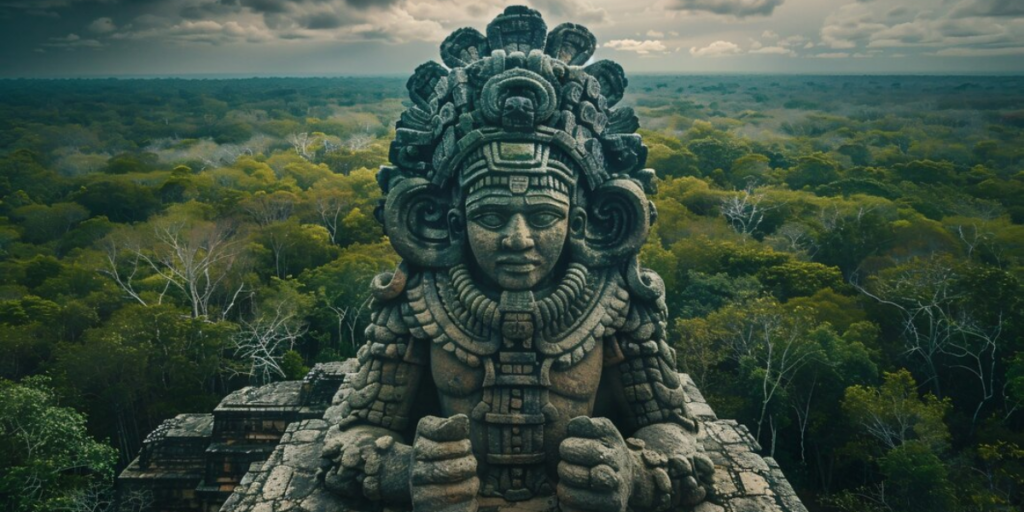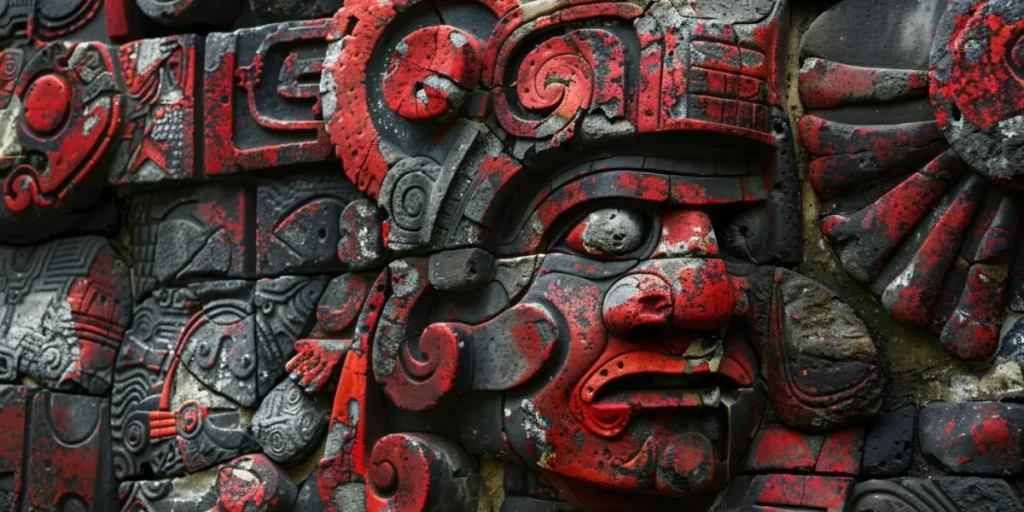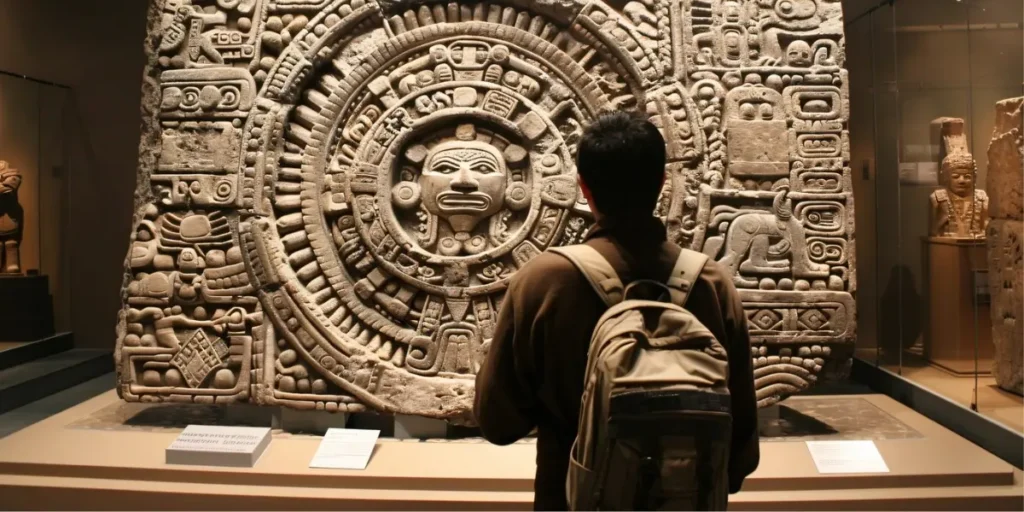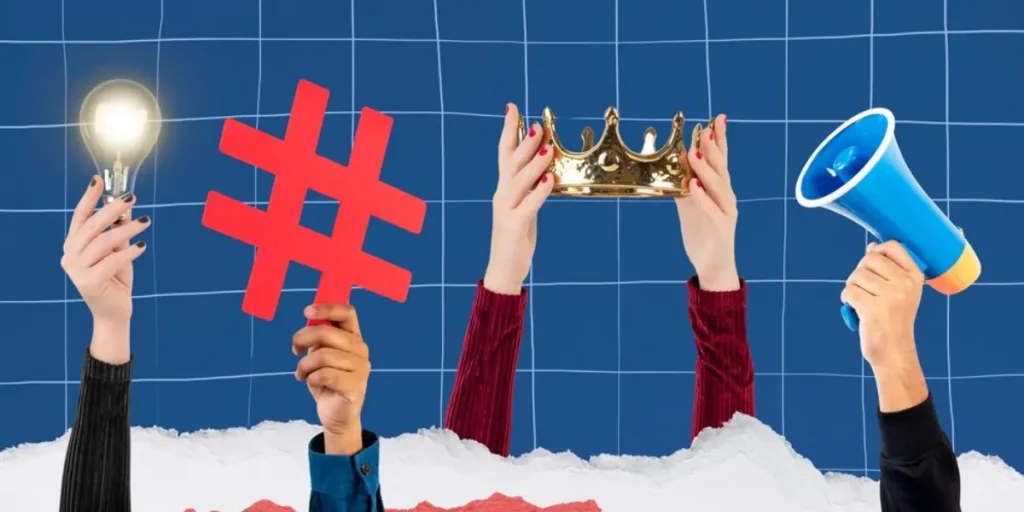Mayan Statue QR Code: Discover This Well-Kept Secret

We’ve all had a dream of discovering something cool after watching all the Hollywood movies, right?
Online chaos has surfaced after someone discovered an almost 3,000-year-old Mayan statue bearing a QR Code. Seems hard to believe, but is it real, or just some hoax?
The picture has been there on the internet since 2015, but let’s take a deep dive through this article and discover everything about this Mayan statue QR Code.
But first, let’s know more about who the Mayans were.
A. Who were the Mayans

The Maya civilization was an amazing civilization of indigenous people of the Mesoamerican area. This civilization existed in 2000 BCE and 900 CE.
This civilization was vastly known for building amazing temples and man-made structures. They also mastered the art of writing and created stunning artwork.
They were also quite ahead of their time in the fields of astronomy, mathematics, and even the calendar system.
Mayan legacy has never been forgotten. It still lives among us in the various national museums of Belize, Honduras, Mexico, and Guatemala.
B. Is the Mayan statue QR Code real

Well, the Mayan statue QR Code is real, and it works. There are no doubts about that.
But was it created thousands of years ago?
A YouTube channel which goes by the name of Meeko TV then came up with a video of the Mayan statue head that has now, exceeded 20,000 views, and from this, people avail that the head is a warning from the Mayan civilization about aliens.
Despite the numerous myths connected to Maya mythology and based on disasters that happened in the past and disasters predicted for the future, no data can point to the Mayan QR code as a myth of that type.
It must be mentioned that the Maya were outstanding observers of nature, who calculated astronomical cycles and the circumstances of solar eclipses correctly. However, they did not emphasize aliens that indeed contradict the Maya culture and beliefs.
As stated earlier, the Mayan statue QR Code works. But when one scans it, where does it lead to?
It leads you to Altech Mexico which is an electronic component-selling online store.


C. Why did the Mayan statue QR Code go viral

The Mayan statue QR code became mass popular because many people saw the artistic innovation of merging culture with modern-day advancement.
Here’s why it went viral:
1. Cultural mashup
This brought out a feeling of curiosity in people mainly because placing the ancient Mayan statue next to the relatively modern QR code looked interesting.
2. Interactive experience
The QR code was linked to an interesting or informative feature, like the website, which led to more and more people visiting it and using the product/service
3. Curiosity and mystery
People found the combination of a piece of art from prehistoric history, equipped with a QR code, interesting and mysterious. Many desired to know what the code showed.
4. Social media buzz
It was a new idea and fit right in with the consideration of being posted on social media. It was passed from hand to hand and incorporated elements of the old and the new thus going viral.
D. Other viral QR Code marketing campaigns

1. Tesco’s virtual store in South Korea
Tesco using the operational name of Homeplus in South Korea introduced virtual stores in Subway systems. They provided pictures of the supermarket that showed the shelves with QR codes beside the product. Passengers could use their mobile phones to capture the barcodes add products to an online shopping basket and have them brought to their doorstep. So, this adaptation of QR codes proved to be convenient for daily travelers in large cities and helped to boost Internet sales.
2. Burger King’s whopper detour
Burger King’s Whopper Detour’ campaign encouraged consumers to go to McDonalds, however the intention was to share whoppers with them. The campaign required that the consumers download the Burger King app, and place an order of Whopper for one cent, within the proximity of 600 feet from McDonald’s.
In the app, there was a QR of a burger that when scanned, led to the consumer being redirected to the nearest Burger King outlet for delivery. This approach not only led to an increase in app installation but also brought people to Burger King restaurants and ridiculed their competitors.
3. Coca-Cola’s “Share a Coke” campaign
Coca-Cola’s recent advertising campaign was the “Share a Coke”. The bottles had names of different vending options inscribed on them.
It was also embraced while including the QR codes that the users could scan to generate a virtual bottle with their name or that of a friend and share on social media pages. It was fun-filled and also shareable and helped increase engagement and probably boost sales since the public got to see it in action.
4. Spotify codes
Spotify included a special mark that resembled QR Codes which when snapped with any smartphone. It prompts the application to share or play certain songs, albums, or playlists. Indeed this feature facilitated music sharing by friends in a more faster and interactive way as compared to the traditional methods hence enhancing music sharing to become more personal and fun.
5. The Victoria & Albert Museum’s QR Code Project
The V&A Museum in London made use of the QR codes to offer additional content regarding the showcased items to the interested spectators. These codes opened videos, audio, and further descriptions and along with them, the visitor experience was made more interactive and therefore more informative.
Brands that trust us
E. How to create a QR Code for your viral marketing campaign

Using Scanova for a demo, here’s how to create a Website URL to QR Code online:
1. Go to Scanova. Click on Create QR Code
2. Select the Website URL category from amongst other QR Code categories.
3. Enter the link you want to encode in the QR Code. You can also go for Advanced Settings in the same step
4. Here, you can tick the Conditional Redirection and select the redirection method—Country, Device, and Operating System
5. Once selected, click on Add Condition followed by selecting the required field and the corresponding URL
6. Now, click Continue
7. On the page that loads, name the QR Code and click Create QR Code
8. Next, you’ll see the preview of the QR Code along with the Edit Design button
9. If you click on it, you’ll see two QR Code designs—a Custom Logo and a Custom Background Design. Custom logo design allows you to add a logo and color to your QR Code. On the other hand, a custom background design helps you place a QR Code on any image
Note that a customized QR Code attracts more scans than a black-and-white one. Hence, to attract maximum scans, design your QR Code.
10. Once your QR Code is ready, say after you design it, you can preview it. If everything looks fine, proceed to download.
11. To download the QR Code, you need to create an account. Here, Sign Up to get started with a 14-day free trial.
12. Once you Sign Up, click on the download icon. A pop-up will appear prompting you to specify QRCode image size and format. Once you enter the details, click Export
That’s it. Your website URL has now been converted to a QR Code. Simply test it once before you go ahead and share it with the world for your marketing campaigns.
Summing Up
The combination of the historic Mayan civilization and the advanced QR code innovation is a perfect example of the innovative and endless ways of marketing.
Thus, the interaction between history and innovation is a way to attract the audience and involve new people in the process, doing history and inventing the future simultaneously.
Therefore, the next time you meet a QR code, think outside the scan. Just think about the stories and experiences that are hidden behind the door and the worlds that shall come together.
Carrying on the tradition of the Mayan statue QR code, let’s keep on discovering, experimenting, and stimulating the desire to know more in each marketing initiative.

